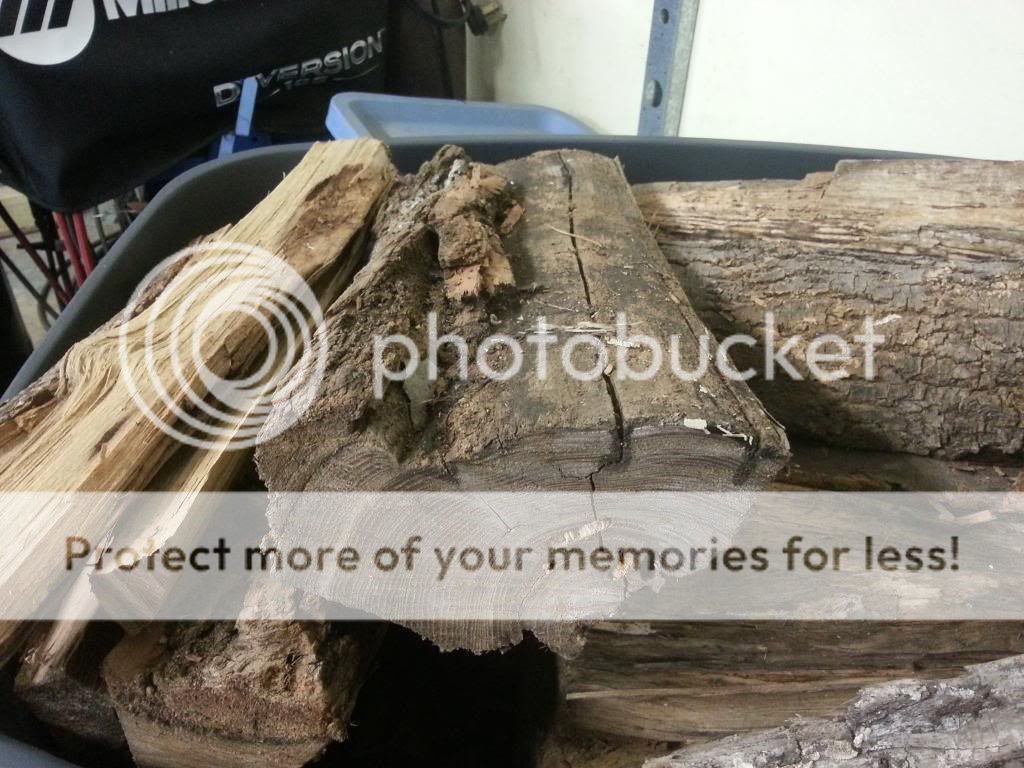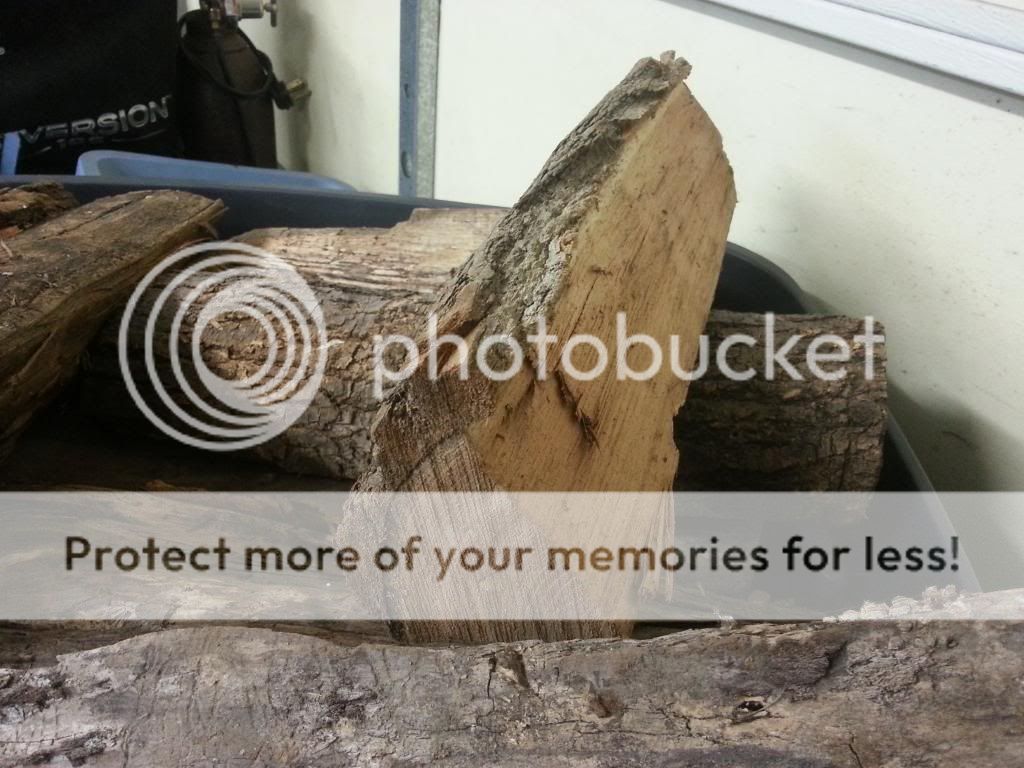The house my wife and I live in today came with an old fireplace insert. The previous owner gave us some direction on the best way to start and maintain the fire which worked well with that insert. Only small splits were used, which created a great bed of coals quickly and burnt nicely, but needed to be loaded often. Here is the typical split size we use:

We now have a Jotul 550 and have been utilizing a similar procedure, small branches and rolled up newspaper to start with small splits on top to get that nice bed. I think this is where our issue begins. The room with the insert gets very hot within a couple of hours (80 degrees is easily achieved). I have the air control all the way down which minimizes the air in and extends the burn, but it still heats the room up (which is well insulated as well). I have looked at how to move that air and per recommendations on this forum found a small fan blowing the cold air towards the insert room helped move heat, but it did not lower the insert room temps.
See my post here: https://www.hearth.com/talk/threads/another-air-circulation-question-in-a-ranch.115956/#post-1557536
Shame on me for now doing more research on this sooner and really learning how to use the 550, but I think my split size may be the issue. I believe smaller splits while burning easier and quicker also burn hotter. We usually use the small splits since it burns clean and our chimney sweep always comments that our chimney/liner was pretty good. I am thinking that maybe starting a little earlier in the burning process after the bed of coal with a larger split may help "maintain" a comfortable temp while still raising temps in the rest of the house a few degrees. Here is the size split I was thinking of using instead


My thought was get the initial burn going with the small splits until there is a nice bed, then maybe try laying 1 large split on the bed to see how that works. If temps maintain and do not rise too much, I could load her up and go. I think part of this is bad habit from the old insert, and partially concerned about burning too low with large splits to create too much creosote in the liner. I also just purchased a IR temp gun, so I will try monitoring some temps today.
Any help/suggestions would be greatly appreciated. Perhaps due to the size of the insert and our sort of closed floor plan that this may be the norm and cannot do much to fix it.

We now have a Jotul 550 and have been utilizing a similar procedure, small branches and rolled up newspaper to start with small splits on top to get that nice bed. I think this is where our issue begins. The room with the insert gets very hot within a couple of hours (80 degrees is easily achieved). I have the air control all the way down which minimizes the air in and extends the burn, but it still heats the room up (which is well insulated as well). I have looked at how to move that air and per recommendations on this forum found a small fan blowing the cold air towards the insert room helped move heat, but it did not lower the insert room temps.
See my post here: https://www.hearth.com/talk/threads/another-air-circulation-question-in-a-ranch.115956/#post-1557536
Shame on me for now doing more research on this sooner and really learning how to use the 550, but I think my split size may be the issue. I believe smaller splits while burning easier and quicker also burn hotter. We usually use the small splits since it burns clean and our chimney sweep always comments that our chimney/liner was pretty good. I am thinking that maybe starting a little earlier in the burning process after the bed of coal with a larger split may help "maintain" a comfortable temp while still raising temps in the rest of the house a few degrees. Here is the size split I was thinking of using instead


My thought was get the initial burn going with the small splits until there is a nice bed, then maybe try laying 1 large split on the bed to see how that works. If temps maintain and do not rise too much, I could load her up and go. I think part of this is bad habit from the old insert, and partially concerned about burning too low with large splits to create too much creosote in the liner. I also just purchased a IR temp gun, so I will try monitoring some temps today.
Any help/suggestions would be greatly appreciated. Perhaps due to the size of the insert and our sort of closed floor plan that this may be the norm and cannot do much to fix it.




 Being in the tree care business for 30+ years, I don't always think about the fact that not everyone can glance at a piece of wood and know what it is.
Being in the tree care business for 30+ years, I don't always think about the fact that not everyone can glance at a piece of wood and know what it is. ), but you can do a lot with burn technique.
), but you can do a lot with burn technique.